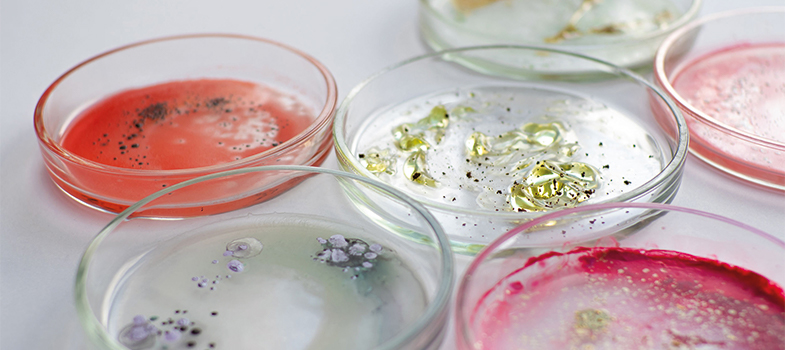1.2 Impact of sample quality on testing and reporting of results
Not all samples received by a laboratory will be of high quality, that is, contaminant free and in sufficient quantity. Prior to starting the testing process, laboratory staff should be aware of potential quality issues relating to specific sample types that could lead to false results.
Blood and
It is important to recognise that when samples are taken from most other sites in the body the environment is not sterile. This means that a mix of the normal
Clinical staff can take several measures to improve the quality of the specimens they send to laboratories, either by reducing contamination and/or increasing the yield of true pathogens. For example, sterile containers and equipment should be used for sample collection, to avoid the introduction of contaminating organisms.
In general, ‘the larger the better’ is a good rule to follow for specimens. Surface swabs just dipped in material make much poorer specimens than a larger, deeper sample because there is less chance of finding the infectious agent amongst the contaminants. A spoonful of faeces is better than a swab dipped in faeces, which is likely to pick up many orders of magnitude more commensals than pathogens. This is likely to make subsequent isolation of the pathogen more difficult.
Some types of sample may require special treatment or have other considerations.
- Sputum samples, for instance are very useful for diagnosing
TB and are frequently sent to diagnose other respiratory tract infections. However, the results have to be considered carefully as the sample is likely to be contaminated with upper respiratory tract flora. Identifying all the organisms in a sputum sample will not help the diagnosis and takes up a lot of laboratory time and resources. - Blood cultures, which are important in diagnosing severe and/or bloodstream infections, are another sample type that is easily contaminated. Even though the blood is taken carefully to minimise contamination and inoculated directly into blood culture media by the person taking the samples, contaminants will still sometimes be found. Prof Koch’s guide to perfect blood cultures [Tip: hold Ctrl and click a link to open it in a new tab. (Hide tip)] (2010), shows how careful decontamination of the skin and bottles, plus aseptic technique can minimise sample contamination.
- Urine samples need to be collected carefully in midstream. The sample should be refrigerated if it cannot be processed immediately. Boric acid can be used as a preservative if this is not possible. Microscopy helps determine whether a urinary tract infection (
UTI ) is present before culturing by looking for pus cells which indicate inflammation/infection.
Laboratory staff also need to take care not to introduce contaminants into cultures. Good laboratory practice should be followed at all times.
After testing it is important to avoid reporting any additional organisms and instead focus only on the causative pathogen, if found. Correct reporting is needed to guide accurate treatment decisions and for surveillance purposes.
-
What might be the consequence if commensal organisms are reported in test results?
-
The reporting of commensal organisms in microbiology tests can lead to unnecessary or inappropriate antimicrobial treatment. For surveillance, it could make the results inaccurate.
Activity 3: Thinking about contamination in your workplace
A
If your laboratory has a SOP for sample processing and reporting, look at this now.
- Which organisms should be reported as normal flora and which are likely to be pathogens?
- What other types of information does your SOP have about clinical sample processing?
If you do not have access to a relevant SOP you can download a SOP for the processing of skin, superficial and non-surgical wound swabs (Adapted from PHE, 2018).
Discussion
- You should have noted that cultures may contain a mix of pathogens,
commensal flora , and sometimes contaminants. - SOPs for sample processing and reporting should include the following:
- A statement that normal flora are likely to contaminate samples from the body site/sample type under consideration, unless the site is normally sterile.
- A list of pathogens important for that particular site. Other commensal organisms commonly isolated from the specified site, to be reported as ‘Regional flora’, ‘Normal flora only’ or ‘Likely colonisation’.
- Guidance for semi-quantitative reporting is helpful e.g. +-; +; ++; +++. This can be used to give the clinician an idea as to whether an organism which could either be colonising or causing an infection, is present in large numbers. For example, if a wound has a few colonies of S. aureus mixed with other skin flora it is less likely to represent an infection than heavy, pure growth of the same organism.
- Suggested comments to add to reports, for instance, ‘Normal flora only’ or ‘No antibiotics indicated unless there are clear signs of infection present’.
- Your blood culture SOP is likely to state that everything that grows in blood cultures should be reported, as what appears to be a contaminant may be significant if it grows on several occasions. Organisms which are unlikely to be causing a bacteraemia e.g. coagulase negative staphylococcus in a patient without intravenous (
IV ) lines, might have an additional comment such as ‘doubtful clinical significance’ or ‘significance uncertain’ to discourage unnecessary antibiotic use. These organisms usually do not need sensitivity testing as this only encourages unnecessary antibiotic use. If your laboratory has a Microbiology or Infectious Diseases physician, they will probably be the one deciding if the isolates are significant or not.
If your laboratory SOP did not include all this information, look at the example provided.
1.1 Origins of samples



